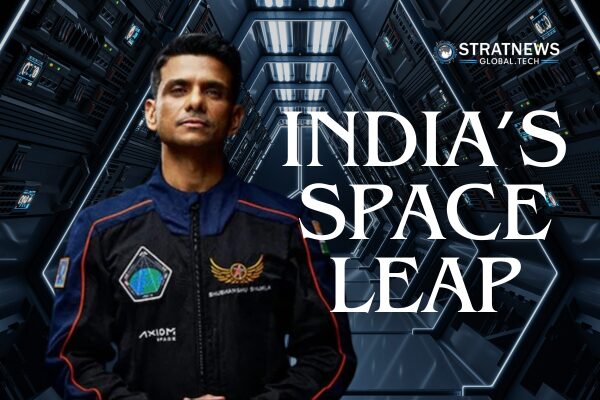NASA’s Axiom-4 mission crew including Indian astronaut Shubhanshu Shukla and 3 others are set to begin their journey back to Earth on Monday (July 14). The splashdown in the Pacific Ocean off the coast of California, US, is expected at 5.30 am EDT (3 PM IST) on Tuesday.
On July 14, 2025, at 4:35 PM IST, Shukla and his international crewmates undocked from the ISS, concluding their mission with a carefully orchestrated 17-hour journey back to Earth.
In their two-week journey, the crew completed nearly 230 orbits around Earth, traveling over 10 million kilometers and witnessing 230 sunrises from space. It will be a poetic end to a mission that began with science and ended in symbolism—bringing India home from the stars.
On June 25, 2025, at exactly 2:31 AM ET (12:01 PM IST), India etched a defining chapter in its space exploration journey. Group Captain Shubhanshu Shukla became the first Indian astronaut to reach the International Space Station (ISS), marking the country’s powerful return to human spaceflight after more than four decades.
This moment came 41 years after Wing Commander Rakesh Sharma flew to the Soviet Salyut-7 space station in 1984. But this time, the story was different—India wasn’t just a participant, it was a key player. This historic achievement wasn’t just about one man going to space—it was about a nation rising with him.
Shukla’s journey, representing India aboard Axiom Mission 4 (Ax-4), showcased the maturity of India’s space ecosystem and highlighted how far the country has come. The mission marked India’s arrival in the league of spacefaring nations that are actively shaping the future of space exploration—not just for themselves, but for humanity.
Born in Lucknow in 1985, Shukla’s childhood dream of becoming an astronaut—sparked during the Kargil War—carried him from the classrooms of City Montessori School to the Indian Air Force, where he earned his wings and rose through the ranks. After over 2,000 flight hours and a Master’s degree in Aerospace Engineering from IISc, he was selected for ISRO’s Gaganyaan training program in 2019. His selection was no accident; it reflected India’s intent to build its own astronaut corps—trained, tested, and ready for future missions.
Axiom Mission 4 launched aboard SpaceX’s Crew Dragon “Grace” from NASA’s Kennedy Space Center. Shukla was part of a globally diverse crew with astronauts from the United States, Poland, and Hungary. This wasn’t just a space mission—it was a diplomatic statement. India, Poland, and Hungary returned to human spaceflight together, showing how science can unite nations with shared ambitions.
For India, this mission was more than symbolic. It delivered strategic value across multiple dimensions.
Technologically, it was a rehearsal for Gaganyaan. The lessons learned from Shukla’s life support systems, space lab procedures, and microgravity operations will directly feed into India’s own human spaceflight systems.
Scientifically, it gave Indian researchers the rare chance to conduct experiments aboard the ISS—something previously out of reach. Seven Indian-led experiments, ranging from muscle regeneration and sustainable agriculture to space-hardy microbes and cognitive assessments, pushed the boundaries of our understanding in ways that will benefit both astronauts and people on Earth.
Economically, India’s investment of approximately Rs 550 crore in this mission was a calculated move. The knowledge, data, and operational exposure it generated would have taken years and much more money to replicate domestically.
Space Diplomacy
In terms of space diplomacy, India’s presence aboard an international crew demonstrated its reliability as a partner in peaceful space collaboration. It positioned India for deeper partnerships with agencies like NASA, ESA, and emerging players, boosting its influence in global space policy discussions.
Shukla’s voice from orbit— “Namaskar, my dear countrymen! What a ride! We are back in space once again after 41 years”—echoed through classrooms, research centers, and homes across the nation. It reignited national pride and reminded every Indian that space is not a distant dream—it’s an achievable reality. During his 14-day mission, Shukla inspired students in Kerala and Lucknow, delivered powerful messages about science and service, and communicated with ISRO centers via HAM radio, showing that India’s space efforts are deeply rooted in education, inspiration, and accessibility.
Experiments in Space
His experiments—sprouting seeds in orbit, testing algae as food, monitoring biological changes in microgravity—are laying the groundwork for long-duration missions to the Moon and Mars. They also address pressing challenges on Earth: food security, climate change, and aging. These are not just space experiments; they’re solutions in the making.
Gaganyaan 2027
The mission’s success sets the stage for what comes next: Gaganyaan in 2027, an Indian space station by 2035, and a manned Moon mission by 2040. Every orbit Shukla completed, every scientific task he performed, and every word he spoke from space moved India closer to these goals.
Comparing Rakesh Sharma’s 1984 flight to Shukla’s 2025 mission captures India’s transformation. Sharma’s journey was made possible by Soviet infrastructure and leadership. Shukla’s mission, while collaborative, had Indian payloads, Indian-led science, and an Indian astronaut contributing as an equal. This is what progress looks like—technological independence, global respect, and homegrown excellence.
In every way, Axiom-4 was a giant leap forward for India. It wasn’t just about getting to the ISS—it was about proving that India belongs at the table where the future of space is being written. It showed the world that India is not just launching satellites; it’s launching ideas, innovation, and influence into orbit.
Shubhanshu Shukla’s name will be remembered not only for his bravery, but for what he stood for: a confident India, reaching for the stars with both ambition and purpose. From Rakesh Sharma’s “Saare Jahan Se Achha” to Shukla’s “Namaskar,” the Indian space story is not just continuing—it’s ascending.


